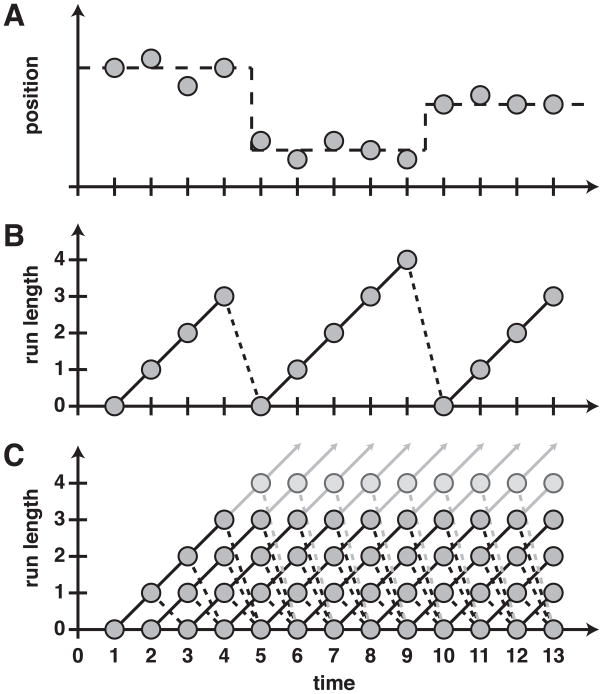Figure 1.
Cartoon illustrating a simple change-point problem. A. Data points (circles) are generated by adding random noise to an underlying mean (dashed line) that undergoes two change-points, at times 5 and 10. B. The number of points since the last change-point, or run-length, is plotted as a function of time for the same example. The run-length increases by one when there is no change-point (black line) and decreases to zero when there is one (dashed black line). C Schematic of the message-passing updating rule from (Adams and MacKay, 2007). Starting from time 1, all of the weight is on the node at run-length 0. At time 2 this node then sends messages to nodes at run-lengths 1 and 0. From there each node sends two messages, one increasing the run-length by one and the other back to the node at rt = 0. Using these input messages, each node updates its weight, p(rt|x1:t).

